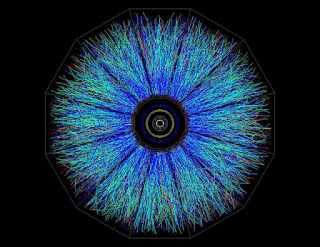Unveiling the Mysteries of Atoms; A Remarkable Quantum Discovery Unveils Fresh Insights
An quantum event has shed light on the structure of atoms in an unprecedented way even distinguishing between protons and neutrons. This remarkable achievement was made possible by the Relativistic Heavy Ion Accelerator (RHIC) a device developed by the Brookhaven Laboratory in the United States. Its purpose is to accelerate ions to nearly the speed of light enabling us to further validate Einsteins famous equation E=mc2.
In an experiment researchers at the Brookhaven Laboratory have utilized a unique form of quantum interference to extract precise information about how protons and neutrons are distributed within gold atoms. This approach bears similarities to positron emission tomography (PET) scans which're medical imaging techniques used by doctors to explore the internal workings of the human body.
Pushing Beyond Existing Knowledge
Conventional probes or X ray machines lack the ability to delve into the core of an atom. Physicists have traditionally relied on high speed collision remnants from particle colliders like CERNs LHC to formulate theories about behavior.
However this revolutionary tool presents an opportunity for making more accurate observations, about protons and neutrons—the fundamental building blocks of atomic nuclei.
Achieving this is made possible by the phenomenon of quantum entanglement, which occurs when gold atoms rub against each other at speeds.
This groundbreaking research showcases the potential to obtain information about how protons and neutrons are arranged within gold atoms using a form of quantum interference that has not been observed in previous experiments.
Because of the scale involved direct observation is not feasible due to the interference caused by the light used for observation. However with energy light waves can stimulate pairs of particles that make up protons and neutrons (such as quarks and antiquarks).
When two atomic nuclei come into contact within a nuclear radii, a photon from one nucleus can interact with gluons from the other nucleus through a virtual quark antiquark pair (gluons are carriers of the strong interaction, which is responsible for binding quarks within protons and neutrons).
This interaction enables us to observe an equivalent of entanglement between different particles resulting in highly accurate visual representations. The level of precision attained is so refined that it allows us to discern the positions of neutrons and protons, within the nucleus.


Post a Comment